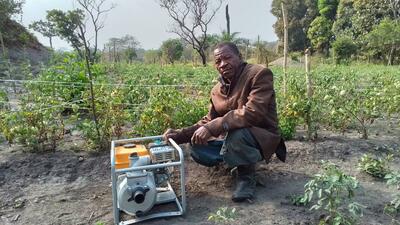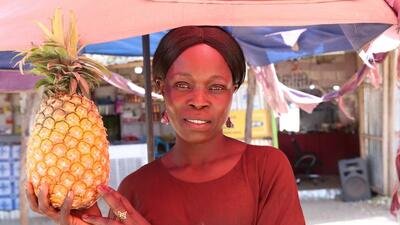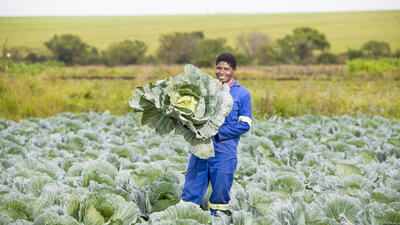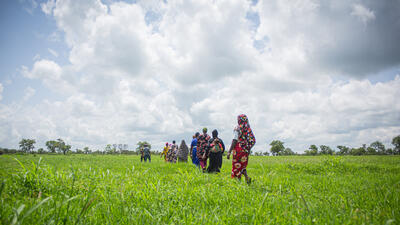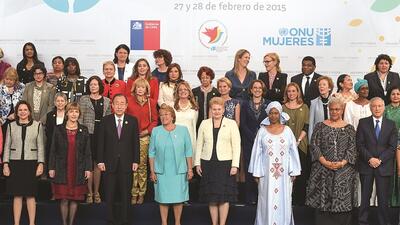Sustainable results prove the power of inclusion
Export opportunities in global markets can spur growth and create jobs, but these opportunities are only sustainable if consideration is given to the environmental and social dimensions of trade development and the relationship between these and competitiveness. From an environmental standpoint, issues including natural capital management and the diffusion of green technologies are essential to competitive and sustainable growth opportunities. A common forum to address trade and environmental agreements could also benefit effective trade and enforcement issues. From a social perspective, gender inclusion is a proven driver of change for the better. It can not only improve skills in developing countries, but also increase the competitiveness of trade sectors.
Environment and competitiveness
For many countries, the fear of diminished competitiveness is one of the main barriers to the implementation of more stringent environmental policies. These countries worry that a change in policies could lead to the relocation of industries in countries with lower standards, so called pollution havens. However, recent studies in the World Bank report Greening Growth: a Path to Sustainable Development, show that environmental policies have little impact on competitiveness and there is no evidence that they lead to job losses due to an exodus of firms to pollution havens. Pollution abatement costs only represent a small share of production costs for most industries, with factors such as availability of capital, labour abundance, location, institutions and agglomeration effects usually being more important than environmental policies in determining where a company will be located and how it will compete.
In the case of a sector that is highly dependent on natural capital, the implementation of a demanding environmental policy is a necessary condition for the long-term competitiveness of the sector. Without sound property rights, increased pressures from trade can lead to a rapid depletion of natural capital and any short-term benefits from increased trade can be negated by the subsequent collapse of the resource base. The improvement in natural capital management that stems from the establishment of secure property rights can be impressive. For example, in Rwanda land tenure regularization spurred a doubling of investment in soil conservation, with even greater investment when land was managed by women. Countries can use a well-managed natural resource base to move up the value chain, for instance by creating a downstream processing sector, and thus seize opportunities in global markets.
Diffusion of green technologies
Trade is central to helping developing countries green their growth processes as it can support the diffusion of green innovation. The pursuit of these growth processes need not herald a new era of protectionism. On the contrary, the transfer of clean technology is more likely to be limited by tariffs on renewable energy technologies and subsidies for fossil fuels than by traditional patent protection.
Few developing countries have the capacity to create frontier green innovation, but there is great potential for green catch-up innovation through the adoption and adaptation of existing green technologies. Such potential can be measured through the production and trade of green goods and services that embody green technologies. Environmental goods, defined by the Organisation for Economic Co-operation and Development as products that measure, prevent, limit, minimize or correct environmental damage to water, air and soil, as well as consider problems related to waste, noise and ecosystems, represent an increasing share of exports, with developing countries only slightly behind developed regions.
While the share of green exports in developing countries has stalled, with the exception of the East Asia and Pacific region, this does not negate the significant potential developing countries have to conquer new green sectors because they are already producers of non-green goods that are very close to green goods in terms of their input requirements or production technologies. Here the proximity between products can aid in evaluating broader capability for green exports. For example, a country with the ability to export apples will probably have most of the conditions suitable to exporting pears, but not necessarily electronics. Incorporating this potential into analysis shows that trade in green and close to green goods amounts to three to five times that of green goods alone.
A common forum for trade and environmental agreements
Trade and global environmental agreements, for example on biodiversity and climate change, need to be discussed in a common forum. In January 2012 at the Green Growth Knowledge Platform Inaugural Conference in Mexico City, Brian Copeland from the University of British Columbia proposed that linking trade and climate talks would be a good means to address leakage and enforcement issues. For example, many countries have discussed using border tax adjustments (BTAs), an import tariff targeting pollution-intensive goods, to level the playing field between countries that impose little or no tax on such goods and those that impose high taxes. However, BTAs are extremely complex to set up, subject to misuse for protectionist reasons and could trigger trade wars if targeted countries decide to retaliate.
Discussing trade and environmental issues together could encourage arrangements in which trading partners would instead agree to an export tax in the country of origin, leading to a better outcome. For instance, in the case of a dispute over softwood lumber trade between the United States of America and Canada, in which Canada was accused of subsidizing exports to the United States, the implementation of an export tax by Canada was not only a more efficient solution than a threatened countervailing import tariff by the United States, but also raised Canadian welfare above the free trade level.
Gender and competitiveness
Interventions in trade policies with a clear focus on gender ensure that a larger fraction of the population is able to upgrade its skills and an increasing number of producers can gain access to tools that will help them benefit from opportunities offered on world markets. As emphasized in a recent article by Elisa Gamberoni and José Reis, there is a direct link between an improved consideration of gender issues and the competitiveness of a trade-oriented sector.
The existence of a strong gender imbalance in some sectors can be an indication that specific gender issues, such as inequality in access to training, keep the sector in a state of low productivity. An example is the garment sector of the Lao People’s Democratic Republic. This labour-intensive sector where women traditionally do the bulk of the work is the source of a high share of manufacturing exports for the country. A new initiative led by the World Bank, the Gender Action Plan, will assess the gender dimension of the current work organization with the ultimate goal of improving the competitiveness of the sector.
These theories and practical examples of inclusion and its relationship to competitiveness demonstrate positive trade outcomes and potential in developing countries. Individually, trade, environment and gender policies can be powerful drivers of sustainable development. Together they can support a magnitude of change.






